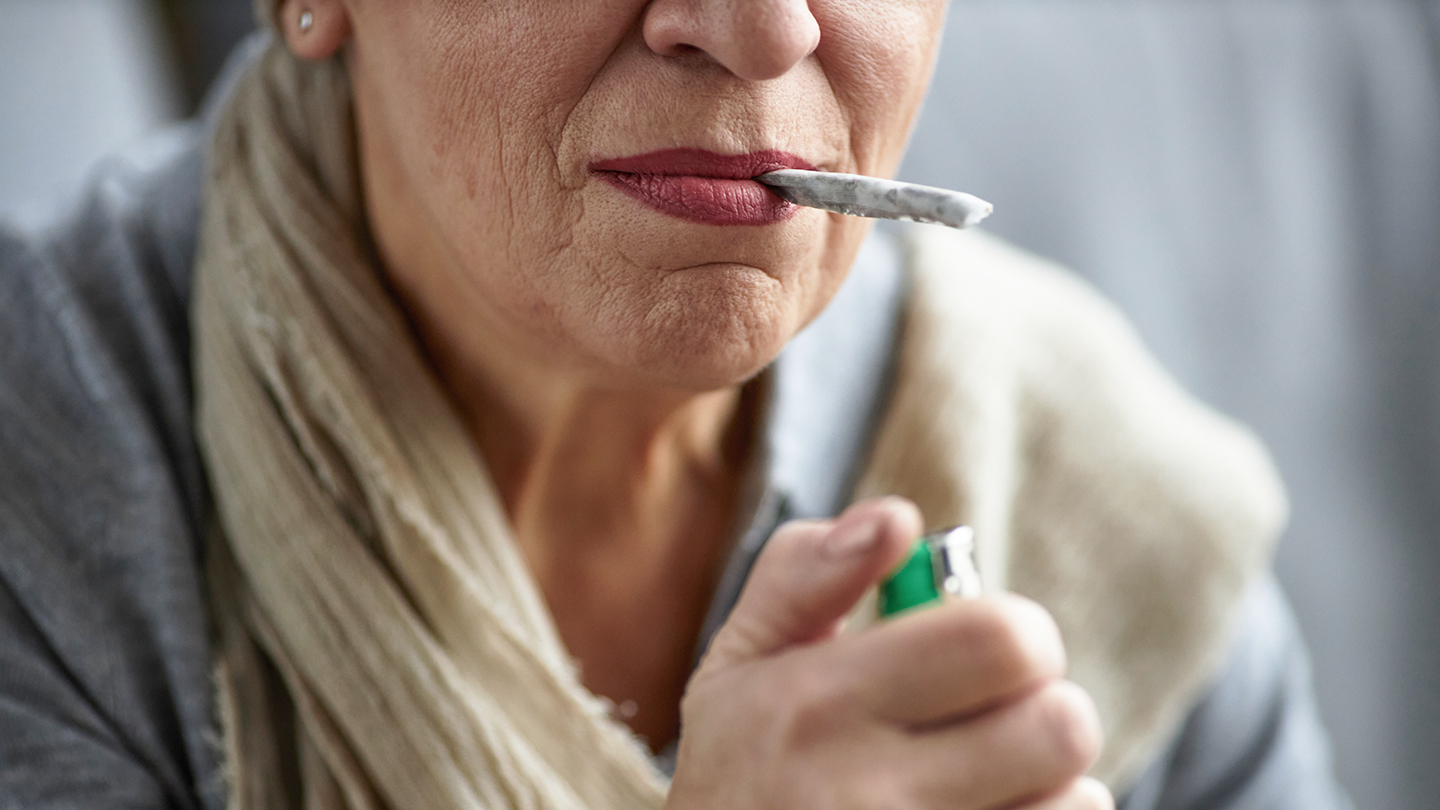[[{“value”:”
(Photo: SeventyFour/Getty Images)
Marijuana use among US seniors has reached a new high, with 7% of adults aged 65 and over reporting they used marijuana it in the past month, according to an analysis published in JAMA Internal Medicine today.
The findings reflect the changing profile of an American cannabis user, with pronounced increases in use by older adults who are college-educated, married, female and have higher incomes.
They could also cast a haze over clinical and legal operations at nursing homes as patients’ reliance on medicinal marijuana and expectations of post-acute settings change, warns corresponding author Benjamin H. Han, MD, with the Division of Geriatrics, Gerontology & Palliative Care at the University of California, San Diego School of Medicine.
“Use of cannabis in long-term care settings is complicated partly because cannabis remains a Schedule I drug although CBD products with concentrations of THC <0.3% are no longer considered scheduled,” he told McKnight’s Long-Term Care News Thursday, noting that only some states have passed laws allowing SNFs to provide medical cannabis. “The main implication might be that as more older adults are using cannabis in the community, they might expect to still be able to use [it] if they do need long-term care, which may be complicated.”
Most Americans now live in places where marijuana is legalized, either medicinally or recreationally.
For the research letter published today, a team led by the Center for Drug Use and HIV/HCV Research at the NYU School of Global Public Health examined data from the National Survey on Drug Use and Health from 2021 through 2023. Respondents 65 and older were asked about cannabis use over the past month, which was defined as “current” use.
“Our study shows that cannabis use among older adults continues to increase, although there have been major shifts in use according to demographic and socioeconomic factors,” senior author Joseph Palamar, PhD, MPH, associate professor of population health at NYU Grossman School of Medicine, said in a press release.
Han said the study marks the first time researchers could examine current use in this age group; previously the pool of recent users was too small and scientists typically relied on a measure of use in the past year.
The new mark of 7% in 2023 is up from 4.8% in 2021 and 5.2%in 2022 — a nearly 46% increase in only two years.
“If we look even further back to 2006 and 2007, less than 1% of older adults used cannabis in the past year,” said Han.
A previous study showed that current marijuana use among older veterans is even higher.
Skilled nursing providers have to start acknowledging the changing patterns and figure out which parents might be using and how that could affect their healthcare needs and potential treatments, Han added in an email to McKnight’s.
That starts with talking to patients and their families at admission.
“Generally, clinicians should consider screening all patients for use of any psychoactive substance using verbal or self-administered screening tools,” Han said, pointing to tools such as those developed by the National Institute on Drug Abuse.
Importantly, the researchers found significant increases in cannabis use among older adults who have multiple chronic conditions including heart issues, diabetes, hypertension, cancer and chronic pulmonary obstructive disease.
The authors caution that the overall increases may be driven, in part, by those who use cannabis aging into the 65-plus age bracket for the period studied. Regardless, they recommend that clinicians screen and educate their older patients about cannabis use, including how physiological changes that accompany aging can make people more sensitive to psychoactive substances.
Han said there could be an increase in problematic cannabis use or cannabis use disorder among older Americans, especially those with a history of other substance use disorders.
But he said it’s important immediately to tackle marijuana use as a health issue when talking with nursing home patients and their families. He said he worries about smoking cannabis for anyone with chronic lung disease, noted the possible association of cannabis use and adverse cardiovascular outcomes, and suggested that patients with cardiovascular disease may want to consider not using cannabis.
Cannabis also can interact with a range of medications that could increase the risk of side effects or over sedation, he added.
“It is important to explore the reasons for using cannabis, what are the potential benefits vs. the potential harms or risks in the context of the patient’s health goals,” he told McKnight’s.
“}]] Higher use among seniors could cast a haze over nursing homes as reliance on medicinal marijuana changes expectations of post-acute care. Read More


